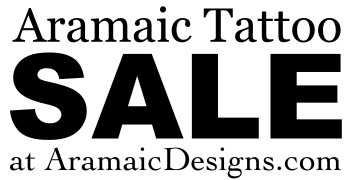
I’ve seen a lot of oddities come across my desk from individuals looking to have Aramaic identified and translated. Pottery sherds, pottery shards (yes, there is a difference), incantation bowls, old Ketubahs that people find in their attics (my personal favorite), prayer books, jewelry, and even a copper scroll (not “The” Copper Scroll, but *a* copper scroll, no joke); but, when this came to me, I was a bit stunned. This is the very first time I have ever seen an artifact this unique.
It is a rather crumbling piece of papyrus that was once sealed with a wax impression. It is old. The handwriting and dialect unmistakably place the text as Imperial Aramaic.
At the top I can make out “ש[נת] ש[תי]תי ז[י] דריהוש מלכא” == “the si[xt]h [yea]r o[f] King Darius,” (placing it during the Persian Administration) and the rest of it seems to be dealing with matters of inheritance within a family.
However, in the meat of the document, I immediately came upon some trouble with the phrase “ברך הסין אובמה” which was sticking out in the middle of the text. It gave me some serious difficulty.
“ברך” is certainly from the root “to bless” and “אובמה” seemed to come from the root “יבם” (“to marry a brother’s widow”). Given this, I thought might be able to interpret “הסין” as the name “Hasin” and the context would be that this individual was cause to marry his brother’s widow to continue the family line under the blessing of the widow’s father.
However, this would require “יבם” to be in the Causitive form, specifically Aphel. Simply put, it couldn’t be in Aphel, given the dialect, and given other demonstrated use of the Haphel elsewhere (the Haphel Causitive didn’t become Aphel until after Imperal Aramaic).
After relaxing with a hot cup of tea and staring at that bit of text in context, I made the following strange connection:
brk hsyn ‘wbmh
barak huseyn ‘owbamah
Even when writing this I’m still in a bit of shock. Am I seeing things? I feel that I’ve looked over that blasted YouTube video one too many times and that it’s affecting me in a horrible way. I’m going to try and get some photos of this up ASAP so that others can take a closer look before I take the time to properly photograph the document in high resolution.
Peace,
-Steve
PS: Today is his birthday, no? I need some sleep… This day has been too much.
PPS: First photo is up. Not only do I have poor light this time of the evening, but I now feel I need to upgrade my iPhone.
UPDATE ABOUT 6 YEARS LATER: If you haven’t “gotten” the joke here, please read this post. 🙂






